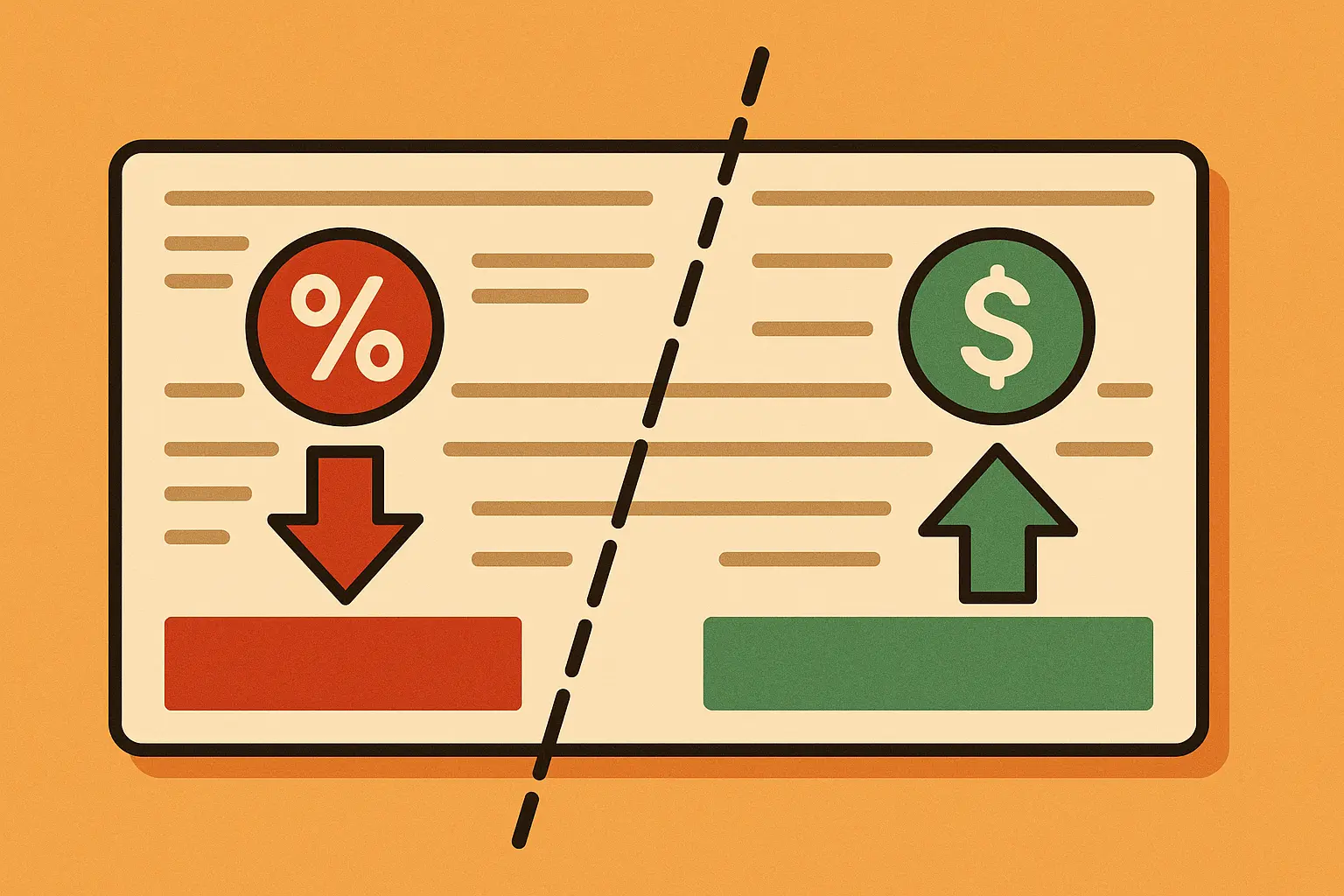I Found $3,000 Hidden in My Paycheck (And You Probably Have Money Hiding Too)

Last year, I finally sat down with a salary sacrifice calculator to run the numbers and realized I’d been throwing away about $250 every month. That’s $3,000 a year I could have been keeping instead of handing over to taxes.
If you’re like most people, you’re probably doing the same thing.
With contribution limits reaching $120,000 for non-concessional contributions in 2025/26 according to AMP’s salary sacrifice calculator, there’s never been a better time to figure out how much money you’re leaving on the table.
Table of Contents
- Understanding Salary Sacrifice Fundamentals
- Advanced Salary Sacrifice Strategies
- Technology and Tools for Salary Sacrifice Planning (including how to use a salary sacrifice calculator)
- Implementation and Compliance Considerations
- Connecting Salary Sacrifice Planning to Career Development
What You’ll Learn
- How salary sacrifice actually works (it’s simpler than you think)
- The specific benefits that save you the most money
- Tools that do the math for you
- Real examples of people saving thousands per year
The 30-Second Version
Salary sacrifice lets you pay for certain benefits with pre-tax dollars instead of after-tax dollars. This reduces your taxable income, which means you pay less in taxes while getting the same benefits. Higher earners save more in absolute dollars, but everyone can benefit.
Modern calculators make this easy to figure out, but you need to follow the rules carefully to avoid problems with the IRS.
Why Most People Miss This Opportunity
Here’s the thing: salary sacrifice sounds complicated and scary. The name alone makes it sound like you’re giving something up.
But you’re not sacrificing anything. You’re just being smarter about how you pay for things you’re already buying.
Think about it this way: Would you rather buy your health insurance with dollars that have already been taxed, or with dollars that haven’t been taxed yet?
The answer is obvious once you see the math.
Most people walk past thousands of dollars in potential savings every year because they don’t understand how these arrangements work. The concept might sound counterintuitive at first – why would you want less salary? – but the tax savings often result in more money in your pocket each month.
Understanding Salary Sacrifice Fundamentals
At its core, salary sacrifice involves redirecting a portion of your pre-tax income toward approved benefits, effectively reducing your taxable income while maintaining or enhancing your overall compensation package. Most people don’t realize they’re already participating in some form of salary sacrifice through their 401(k) contributions or health insurance premiums.
When evaluating how salary sacrifice impacts your overall compensation, it’s essential to consider the broader financial picture alongside your base salary expectations to ensure you’re maximizing both immediate benefits and long-term earning potential.
You can quickly check this impact using a salary sacrifice calculator to see exactly how much you’d save in your tax bracket.
Let’s say you’re in the 22% tax bracket. Every $100 you sacrifice saves you $22 in federal taxes plus about $7.65 in payroll taxes. That’s almost $30 back in your pocket for every $100 you redirect.
A Real Example That Makes It Clear
Meet Sarah. She makes $75,000 and pays $300 a month for health insurance through her job.
Option 1 (What most people do): Sarah gets her full $75,000 salary, pays taxes on it, then uses what’s left to pay her $300 monthly premium.
Option 2 (Salary sacrifice): Sarah’s employer deducts $300 from her salary before calculating taxes, then pays her premium directly.
The result? Sarah’s taxable income drops to $71,400. She saves about $1,067 in taxes while getting the exact same health coverage.
That’s real money back in her pocket every year.
The Legal Stuff (Don’t Worry, It’s Not That Complicated)
Yes, there are IRS rules. But they exist to make sure these programs are fair and legitimate, not to trip you up.
The basic requirement is that salary sacrifice arrangements must be set up properly and documented correctly. Your employer handles most of this – your job is just to make smart elections during open enrollment.
Recent changes in UK labor costs highlight the growing importance of salary sacrifice arrangements. As “RSM UK” reports, “From 1 April 2025, national minimum wage (NMW) rates will increase by between 6.7% and 18%, with the national living wage being set at £12.21 per hour, whilst employers National Insurance contributions (NICs) are also set to rise from 13.8% to 15%.” These increases make salary sacrifice arrangements even more valuable for both employers and employees seeking cost-effective compensation strategies.
Benefits Worth Your Attention
Here’s what actually moves the needle:
Retirement Contributions (401k, 403b)
- Biggest potential savings for most people
- Often includes employer matching (free money)
- Reduces current taxes while building future wealth
Health Insurance Premiums
- Usually your second-biggest opportunity
- No contribution limits
- Immediate tax savings on money you’re already spending
Health Savings Accounts (HSAs)
- Triple tax advantage: deductible, grows tax-free, withdraws tax-free
- Works like a retirement account after age 65
- Only available with high-deductible health plans
Dependent Care Assistance
- Up to $5,000 annually for childcare
- Significant savings for working parents
- Covers daycare, after-school programs, summer camps
Transportation Benefits
- $315 monthly for parking or transit
- Perfect for urban commuters
- Covers public transportation, parking, even some ride-sharing
| Benefit Type | Annual Contribution Limit (2025) | Tax Advantage | Best For |
|---|---|---|---|
| 401(k) Contributions | $23,500 ($31,000 if 50+) | Pre-tax reduction | All income levels |
| Health Insurance Premiums | No federal limit | Pre-tax reduction | Employees with families |
| HSA Contributions | $4,300 individual/$8,550 family | Triple tax advantage | High-deductible health plans |
| Dependent Care FSA | $5,000 | Pre-tax reduction | Working parents |
| Transportation Benefits | $315/month | Pre-tax reduction | Urban commuters |
The secret is combining these strategically. You can participate in multiple programs simultaneously as long as you stay within each program’s limits.
Where Your Savings Actually Come From
Sarah’s situation shows how this works in practice. By putting $3,600 annually toward health insurance premiums through salary sacrifice:
- Federal tax savings: $792 (22% bracket)
- FICA tax savings: $275 (7.65% rate)
- Total annual savings: $1,067
She gets the same health coverage but keeps an extra $89 per month. Over a decade, that’s more than $10,000 in her pocket instead of the government’s.
The financial benefits of salary sacrifice are becoming even more significant. According to “Elite Business Magazine”, “for a typical pension member earning £30,000 and paying a 5% contribution, the National Insurance saving per year would be £225 for the employer and £120 for the employee.” This demonstrates how even modest salary sacrifice arrangements can generate meaningful savings across different income levels.
Running the Numbers That Actually Matter
Don’t guess. Use a salary sacrifice calculator to test different contribution levels and see your potential savings instantly.
I spent one Saturday afternoon running different scenarios through various salary sacrifice calculators. That few hours of work has saved me thousands of dollars since then.
The real power comes from running multiple scenarios to see how different combinations of benefits affect your bottom line. Modern calculators provide real-time modeling across desktop and mobile devices, making complex financial calculations accessible to everyone.
The Step-by-Step Process
- Figure out your current tax situation – What bracket are you in? What’s your effective tax rate?
- List your current benefit costs – Health insurance, retirement contributions, childcare expenses
- Identify salary sacrifice opportunities – Which of these can you pay for with pre-tax dollars?
- Calculate the savings – Use online calculators to model different scenarios
- Pick your strategy – Choose the combination that saves you the most money
Salary Sacrifice Calculation Checklist:
- ☐ Determine current gross salary and tax bracket
- ☐ Identify available salary sacrifice options
- ☐ Calculate potential tax savings (federal, state, FICA)
- ☐ Factor in any additional benefit costs
- ☐ Consider impact on other tax credits or deductions
- ☐ Verify compliance with contribution limits
- ☐ Review effect on Social Security benefits
- ☐ Calculate net financial advantage
- ☐ Document decisions for annual review
Why Your Tax Bracket Matters
Higher earners save more in absolute dollars because they pay higher tax rates. But everyone benefits.
If you’re in the 12% bracket, every dollar you sacrifice saves about 20 cents total (12% federal + 7.65% FICA).
If you’re in the 32% bracket, that same dollar saves about 40 cents.
The higher your income, the more powerful these strategies become. Higher earners typically see greater absolute savings due to higher marginal tax rates, while lower-income employees may benefit more from certain tax credits that phase out at higher income levels.
Modern Tools Make This Easy
Gone are the days of spreadsheets and manual calculations. Today’s salary sacrifice calculators handle the complexity automatically.
The best tools update in real-time as you adjust your inputs. Change your contribution amount, and immediately see how it affects your take-home pay, tax savings, and overall financial picture.
Modern salary sacrifice arrangements rely heavily on sophisticated payroll processing and calculation tools to ensure accurate deductions, tax withholdings, and compliance reporting. The technology behind these systems has evolved dramatically, making it easier than ever for both employers and employees to manage complex benefit arrangements without manual calculations or paperwork.
Advanced Strategies for Maximum Impact
Once you understand the basics, you can get sophisticated about optimizing your approach.
Sophisticated salary sacrifice planning involves optimizing multiple benefit types, timing elections strategically, and coordinating with other financial planning tools to maximize overall compensation efficiency. The difference between basic and advanced salary sacrifice planning is substantial. Basic planning might save you a few hundred dollars per year. Advanced planning can easily save you several thousand dollars annually while also improving your overall financial position.
Stacking Benefits Like a Pro
Michael, a software engineer making $95,000, maximizes his strategy by combining:
- $500/month to 401(k)
- $200/month to HSA
- $150/month for health insurance
- $100/month for dependent care
That’s $950 monthly in salary sacrifice, reducing his taxable income by $11,400 annually. His tax savings: approximately $3,420 per year.
He’s building retirement savings, covering healthcare costs, and paying for childcare – all while keeping an extra $285 per month that would otherwise go to taxes.
Similar to how professionals in specialized fields like certified pharmacy technicians must understand their complete compensation packages including benefits, salary sacrifice optimization requires a comprehensive view of your total financial picture.
Retirement Planning That Actually Works
Start with the employer match. If your company matches 50% of your contributions up to 6% of salary, contribute at least 6%. That’s an immediate 50% return on your money.
After securing the full match, decide between traditional and Roth contributions based on your current tax bracket versus your expected retirement bracket.
Maximizing 401(k) contributions through salary sacrifice while considering employer matching, catch-up contributions for older employees, and Roth versus traditional election strategies can significantly impact your long-term wealth building.
Healthcare Benefits That Compound
HSAs deserve special attention. They’re the only account that offers triple tax advantages:
- Contributions are tax-deductible
- Growth is tax-free
- Withdrawals for medical expenses are tax-free
After age 65, you can withdraw HSA money for any purpose (paying regular income tax, like a traditional IRA). This makes HSAs powerful retirement savings vehicles disgu ised as healthcare accounts.
Optimally combining health insurance premium reductions, HSA contributions, and dependent care assistance can minimize healthcare costs while maximizing tax advantages. Healthcare represents one of the largest expense categories for most families, making it a prime target for salary sacrifice optimization.
Timing Your Elections
Open enrollment is your annual opportunity to optimize. Don’t just roll over last year’s elections – review and adjust based on:
- Changes in your income or tax bracket
- New family circumstances
- Updated benefit options
- Changed healthcare needs
Understanding when and how to make salary sacrifice elections can significantly impact their effectiveness, requiring awareness of enrollment periods, mid-year change events, and long-term planning considerations. Poor timing can cost you thousands of dollars in missed opportunities or force you into suboptimal arrangements for an entire year.
Open Enrollment Preparation Template:
- Review Current Elections
- Analyze past year’s benefit usage
- Calculate actual tax savings achieved
- Identify underutilized benefits
- Assess Changed Circumstances
- Income changes or promotions
- Family status updates
- Health needs evolution
- Research New Options
- Additional benefit offerings
- Updated contribution limits
- New tax law implications
- Run Calculations
- Model different election scenarios
- Compare total compensation impact
- Verify compliance with limits
- Make Informed Decisions
- Prioritize highest-value benefits
- Document reasoning for future reference
- Set calendar reminders for mid-year reviews
Life events like marriage, having a baby, or changing jobs may allow mid-year adjustments. Act quickly – you usually have only 30 days to make changes. Qualifying life events such as marriage, birth of a child, or job changes may allow mid-year modifications to salary sacrifice arrangements, requiring prompt action to maintain optimal benefits.
Technology and Tools for Easy Planning
Modern salary sacrifice planning doesn’t require a finance degree or complex spreadsheets. With a reliable salary sacrifice calculator, you can project your take-home pay, tax savings, and benefit costs without needing advanced math skills.
Modern salary sacrifice planning relies on sophisticated calculators, modeling software, and digital platforms that provide accurate projections and streamline the decision-making process for both employees and employers. The technology landscape has transformed dramatically, making complex financial calculations accessible to anyone with an internet connection.
Digital Calculators You Can Actually Use
The best online calculators provide immediate feedback as you adjust your inputs. Change your contribution amount and instantly see the impact on your taxes, take-home pay, and total compensation.
Online salary sacrifice calculators have evolved to provide comprehensive modeling capabilities, real-time updates, and user-friendly interfaces that make complex financial calculations accessible to all employees. What used to require hiring a financial advisor or spending hours with spreadsheets now takes minutes with the right salary sacrifice calculator.
Look for calculators that:
- Update automatically with current tax rates
- Handle multiple benefit types simultaneously
- Work on both desktop and mobile devices
- Save scenarios for comparison
Browser-based calculators offer immediate access to salary sacrifice modeling without software installation, featuring responsive designs that work across desktop and mobile devices for maximum accessibility. The convenience factor can’t be overstated – being able to run quick calculations during your lunch break or while reviewing benefit materials at home makes a huge difference in decision quality.
The importance of accessible calculation tools becomes clear when considering that specialized calculators like Nucleus Financial ‘s salary sacrifice calculator “will help you work out your client’s annual allowance, including any available carry forward” by requiring “details of your client’s pension savings (including defined benefit accrual) going back at least three tax years.” This complexity highlights why user-friendly digital tools are essential for accurate salary sacrifice planning.
Mobile Access for Real-World Decisions
Being able to run quick calculations on your phone during benefits meetings or while reviewing job offers changes everything. No more taking notes and hoping to remember to run the numbers later.
The increasing importance of mobile-friendly salary sacrifice tools reflects changing workplace dynamics and employee expectations for on-demand access to financial planning resources. Being able to pull out your phone during a benefits presentation and immediately calculate the impact of different options has changed how people approach these decisions.
The best mobile tools maintain full functionality across different devices, so you can start a calculation on your computer and finish it on your phone without losing anything.
Modern calculators automatically adjust their interface and functionality across different screen sizes, ensuring full feature access whether accessed from smartphones, tablets, or desktop computers. This isn’t just about making things look pretty – it’s about ensuring you can access critical financial planning tools whenever and wherever you need them.
Leading salary sacrifice platforms maintain consistent functionality across iOS, Android, and web browsers, allowing employees to access their calculations and make informed decisions regardless of their preferred device.
| Platform Feature | Desktop | Mobile App | Web Browser | Benefits |
|---|---|---|---|---|
| Real-time Calculations | ✓ | ✓ | ✓ | Instant feedback on changes |
| Save Scenarios | ✓ | ✓ | ✓ | Compare multiple options |
| Tax Bracket Updates | ✓ | ✓ | ✓ | Always current calculations |
| Print/Export Results | ✓ | Limited | ✓ | Documentation for records |
| Offline Access | Limited | ✓ | ✗ | Calculate without internet |
AMP’s specialized calculator provides comprehensive modeling for Australian salary packaging arrangements, including fringe benefits tax calculations and compliance with local regulations. While this specific tool focuses on Australian markets, similar calculators exist for US-based arrangements, each designed to handle the unique regulatory requirements of their respective jurisdictions.
Advanced calculators offer dynamic modeling that adjusts for changing tax rates, benefit costs, and personal circumstances to maintain accurate projections throughout the year. This real-time capability prevents the frustrating surprises that can occur when your financial situation changes mid-year but your benefit elections remain static.
Implementation and Staying Compliant
The regulatory side sounds scarier than it actually is. Your employer handles most compliance requirements – your job is making smart elections and keeping good records.
Successful salary sacrifice programs require careful attention to regulatory compliance, documentation requirements, and ongoing administration to maintain their tax-advantaged status and avoid potential penalties. The regulatory landscape changes frequently, and what worked last year might not be compliant today without proper adjustments and oversight.
Rules That Actually Matter to You
Salary sacrifice arrangements must be:
- Voluntary (you can’t be forced to participate)
- Properly documented (written elections)
- Within legal contribution limits
- Applied consistently
Most compliance headaches come from employers not setting up programs correctly, not from employees making poor elections.
Salary sacrifice arrangements must adhere to complex federal and state regulations, requiring ongoing monitoring and updates to ensure continued compliance as tax laws evolve.
Cafeteria plans must meet specific nondiscrimination testing, documentation standards, and operational requirements to maintain their tax-favored status under federal law. These requirements exist to ensure that salary sacrifice benefits don’t disproportionately favor highly compensated employees at the expense of rank-and-file workers.
Different states may have varying requirements for salary sacrifice arrangements, particularly regarding state income tax treatment and additional regulatory obligations. This patchwork of regulations means that what works in one state might not be optimal or even legal in another, requiring careful attention to local requirements.
The scale of potential savings from salary sacrifice compliance demonstrates why proper implementation matters. According to OnRec, “Employers partnered with employee benefits technology provider, Zest, are saving £6.7 million each month on employer National Insurance contributions,” highlighting the substantial financial benefits available when salary sacrifice programs are properly managed and compliant.
Documentation That Protects You
Keep copies of:
- Your benefit elections
- Payroll confirmations showing deductions
- Annual statements from benefit providers
- Any changes you make during the year
Good records protect you if questions arise later and make tax filing easier.
Proper documentation serves as the foundation for legally compliant salary sacrifice programs, protecting both employers and employees while ensuring audit readiness. Cutting corners on documentation almost always creates bigger problems down the road, making thorough record-keeping essential from day one.
Valid salary sacrifice arrangements require written employee elections, proper authorization forms, and clear documentation of the voluntary nature of the benefit reductions. These documents must clearly demonstrate that employees made informed, voluntary decisions about their benefit elections without coercion or misrepresentation.
Comprehensive record-keeping systems must track all salary sacrifice transactions, benefit distributions, and tax reporting to support potential audits and regulatory inquiries. Building these systems proactively costs far less than trying to reconstruct records after an audit begins or compliance issues arise.
When ABC Corporation faced an IRS audit of their Section 125 plan, their meticulous documentation saved them from penalties. They maintained digital records of all employee elections, annual nondiscrimination testing results, and monthly payroll reconciliations. The audit concluded with no violations found, whereas a similar company without proper documentation faced $50,000 in penalties and required plan corrections affecting 200+ employees.
Using This Knowledge in Your Career
Understanding salary sacrifice becomes particularly valuable when evaluating job offers and negotiating compensation.
Understanding salary sacrifice options becomes particularly valuable when evaluating job offers, negotiating compensation packages, and making career transitions, as these benefits can significantly impact total compensation value. Many professionals focus exclusively on base salary during job negotiations, missing opportunities to optimize their overall compensation through strategic benefit elections.
Evaluating Job Offers Beyond Base Salary
When comparing offers, look at the complete benefits package:
- What salary sacrifice options are available?
- How generous is the employer match?
- What’s the actual cost of health insurance?
- Are there unique benefits like HSA contributions or transportation allowances?
A lower base salary with better benefits might actually put more money in your pocket.
When you’re skilled at presenting your qualifications effectively to secure better job opportunities, understanding salary sacrifice calculations enables you to evaluate and negotiate comprehensive compensation packages that maximize your take-home value. This knowledge becomes particularly powerful when base salary negotiations reach their limits but benefit flexibility remains available.
Just as having a professional resume format helps you stand out in the application process, understanding salary sacrifice calculations gives you an edge when evaluating and negotiating the complete compensation picture during job offers.
When you land interviews and job offers, you can leverage salary sacrifice knowledge to assess the true value of benefit packages, potentially identifying opportunities to negotiate more favorable arrangements even when base salary may be fixed. Many employers have more flexibility in benefit design than in salary budgets, creating opportunities for creative win-win arrangements.
Preparing for salary negotiations requires the same strategic thinking used in preparing for banking interview questions – you need to understand the complete landscape and be ready to discuss all aspects of compensation, not just the obvious ones.
Negotiating When Salary Is Fixed
Many employers have more flexibility in benefit design than in salary budgets. If they can’t increase your base pay, ask about:
- Enhanced 401(k) matching
- Employer HSA contributions
- Additional PTO (which has monetary value)
- Flexible benefit allowances
These alternatives often provide more value than equivalent salary increases due to tax advantages.
Candidates can negotiate additional 401(k) matching, enhanced HSA contributions, or flexible benefit allowances when employers couldn’t budge on base salary. These arrangements often provide more value than equivalent salary increases due to the tax advantages.
Career advancement often involves understanding how different benefit structures at new employers might impact your overall financial situation and decision-making process. The ability to quickly evaluate and compare benefit packages can help you make career moves that advance both your professional goals and your financial well-being.
Resume Builder IQ helps professionals present themselves effectively in the job market, and understanding salary sacrifice calculations complements this by enabling you to evaluate and negotiate the complete compensation picture. When you combine strong resume presentation skills with financial literacy around compensation optimization, you can make more informed career decisions that maximize both immediate and long-term financial outcomes. Ready to take your career to the next level? Explore Resume Builder IQ’s tools to enhance your job search strategy while applying these salary sacrifice insights to secure the best possible compensation package.
Your Next Steps
Start simple. Don’t try to optimize everything at once.
- Calculate your current situation – Use a salary sacrifice calculator to see where you stand today
- Identify your biggest opportunity – Usually retirement contributions or health insurance premiums
- Make one change – Pick the option with the biggest potential savings and implement it
- Review and expand – Once you’re comfortable, add other benefits strategically
- Set an annual review – Calendar time each year to reassess and optimize
The goal isn’t perfection – it’s progress. Even small improvements can save you hundreds or thousands of dollars annually.
Final Thoughts
Salary sacrifice calculators represent more than just financial tools – they’re gateways to understanding how strategic benefit elections can significantly impact your take-home pay and long-term financial health. The most successful users approach these arrangements as part of a comprehensive financial strategy rather than isolated decisions made during open enrollment periods.
The technology has evolved to make complex calculations accessible to everyone, but the real value comes from understanding how different benefit options interact with your personal financial situation, career goals, and tax circumstances. Whether you’re evaluating a new job offer or optimizing your current benefit package, the insights gained from proper salary sacrifice planning can translate into thousands of dollars in additional take-home pay each year.
Remember: this is money you’re already earning. Salary sacrifice just helps you keep more of it instead of sending it to the government.
The technology exists to make this easy — and a salary sacrifice calculator is one of the simplest tools to start with. The tax benefits are real and substantial. The only question is whether you’ll take advantage of them.
Compliance requirements and regulatory changes mean these arrangements require ongoing attention and periodic review. What works optimally today might need adjustment as your circumstances change or tax laws evolve. The investment in understanding these tools and strategies pays dividends not just in immediate tax savings, but in the financial confidence that comes from making informed decisions about your compensation and benefits.








